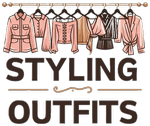Colour psychology is a captivating field that explores how different colours can influence human emotions, behaviours, and perceptions. In the realm of fashion, understanding the impact of colours can be a powerful tool for self-expression and communication. Whether you’re dressing for a job interview, a first date, or a casual outing, the colours you choose can significantly affect how you feel and how others perceive you.
Fashion is not just about looking good; it’s also about feeling good and projecting the right image. By delving into the psychology of colours, you can make more informed choices that align with your goals and enhance your overall presence. This article will guide you through the fascinating world of colour psychology in fashion, providing practical tips and insights to help you dress to impress and influence the mind.
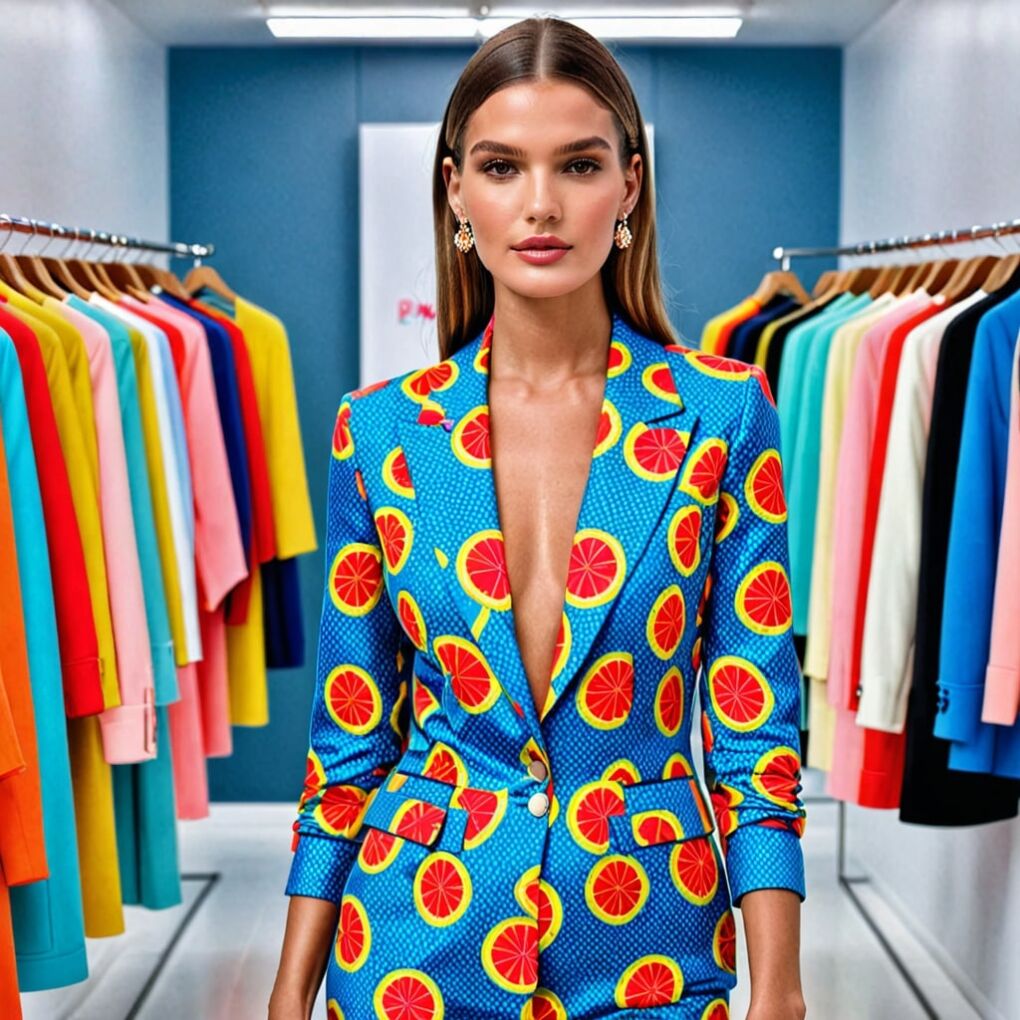
The Basics of Colour Psychology
Colours have a profound impact on our emotions and behaviors. For instance, red is often associated with passion and energy, while blue is linked to calmness and trust. Each colour has its unique psychological attributes, and these can vary slightly across different cultures and contexts. Understanding these attributes can help you choose the right colours for different occasions and purposes.
How Colours Affect Emotions and Behaviors
- Red: Known for its ability to stimulate energy and passion. It can also evoke feelings of urgency and excitement.
- Blue: Associated with trust, calmness, and stability. It is often used in professional settings to convey reliability.
- Yellow: Linked to happiness, optimism, and creativity. It can also be attention-grabbing and uplifting.
- Green: Symbolizes nature, growth, and harmony. It is often used to create a sense of balance and relaxation.
- Purple: Associated with luxury, royalty, and creativity. It can also evoke a sense of mystery and sophistication.
- Black: Often seen as sophisticated, powerful, and authoritative. It can also be perceived as mysterious or intimidating.
- White: Represents purity, simplicity, and cleanliness. It can also create a sense of clarity and openness.
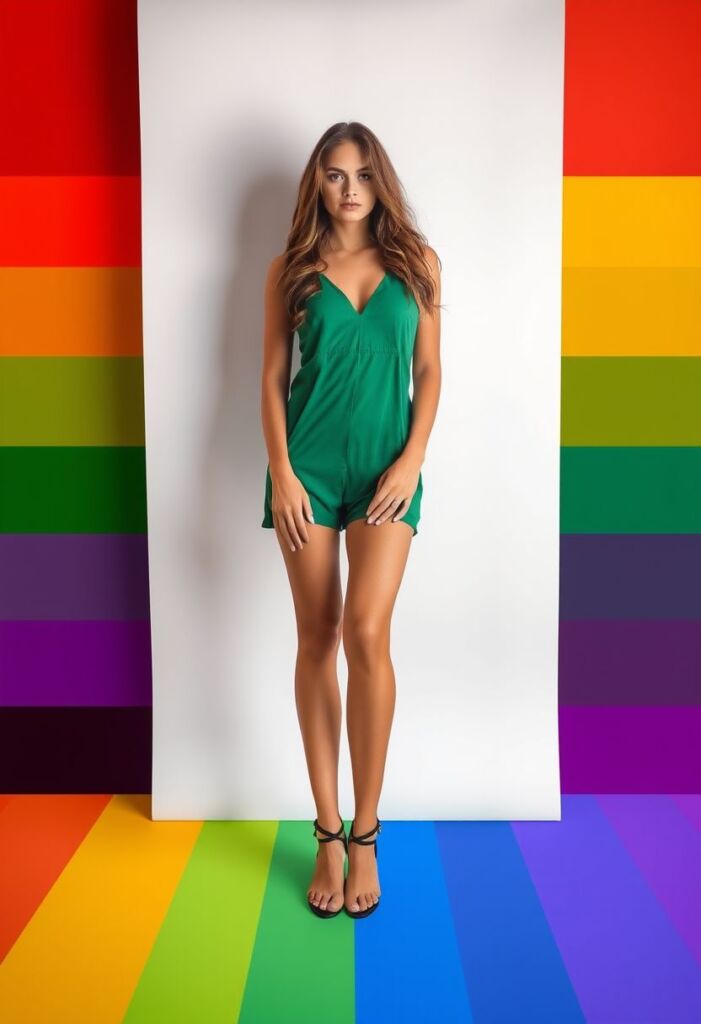
The Role of Context in Colour Perception
The context in which a colour is used can significantly influence its psychological impact. For example, red can be perceived as aggressive in a professional setting but as passionate and romantic in a social setting. Understanding the context and the message you want to convey is crucial when selecting colours for your wardrobe.
The Psychology of Colours in Fashion
Red: The Colour of Passion and Power
Red is a powerful and attention-grabbing colour that can make a bold statement. In fashion, red is often used to convey confidence, passion, and energy. It can be particularly effective in professional settings where you want to stand out and make a strong impression. However, it’s important to use red sparingly, as too much can be overwhelming.
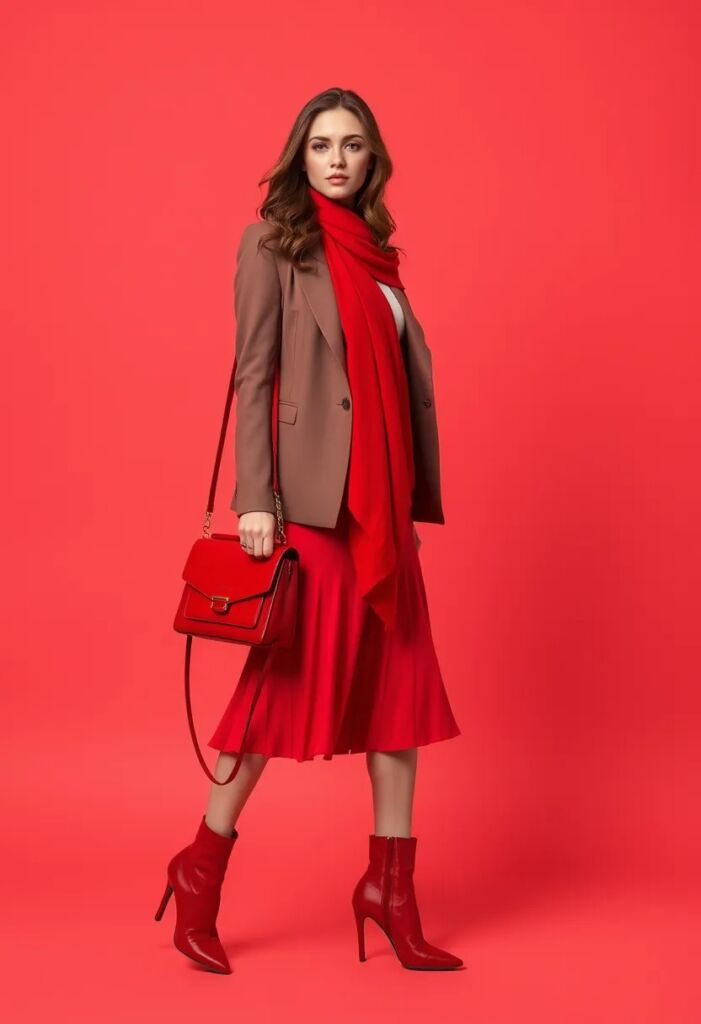
Pro Tip: Add a touch of red to your outfit with accessories like a red scarf, purse, or shoes to create a focal point without overwhelming the look.
Blue: The Colour of Trust and Calmness
Blue is a versatile and calming colour that is often associated with trust, reliability, and stability. In fashion, blue can be used to create a professional and composed appearance. It is particularly effective in business settings where you want to convey a sense of trust and competence.
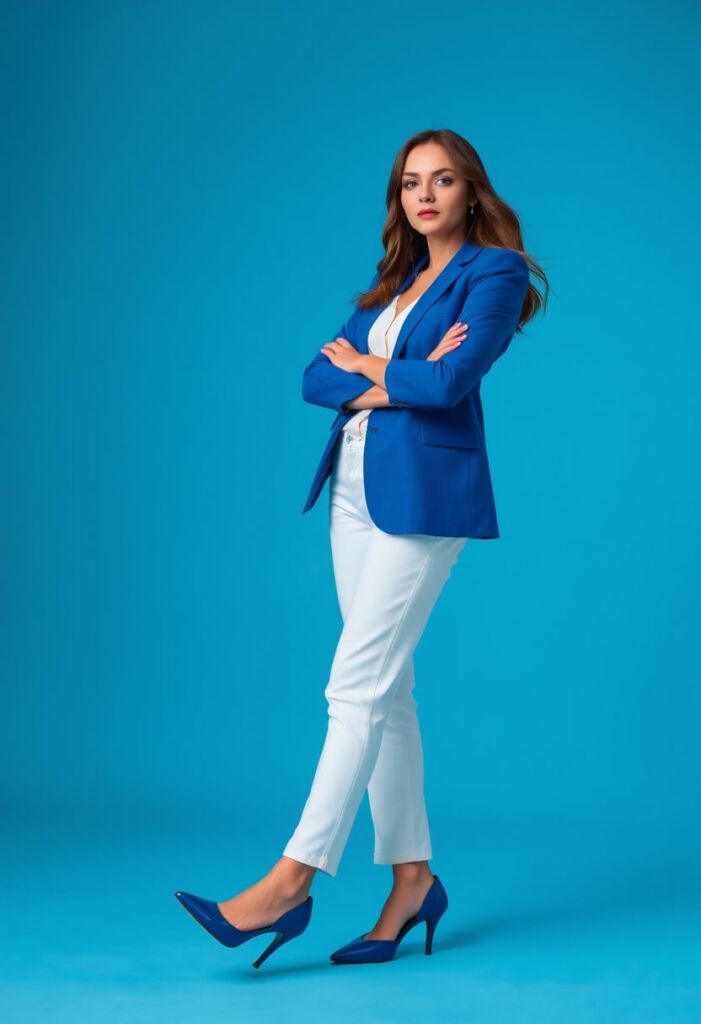
Pro Tip: Opt for navy blue or deep blue tones for a sophisticated and professional look. Pair with neutral colours like white or grey for a classic and timeless ensemble.
Yellow: The Colour of Happiness and Creativity
Yellow is a bright and cheerful colour that can instantly lift your mood and the mood of those around you. In fashion, yellow can be used to add a pop of colour and create a fun and vibrant look. It is particularly effective in casual and social settings where you want to appear approachable and friendly.
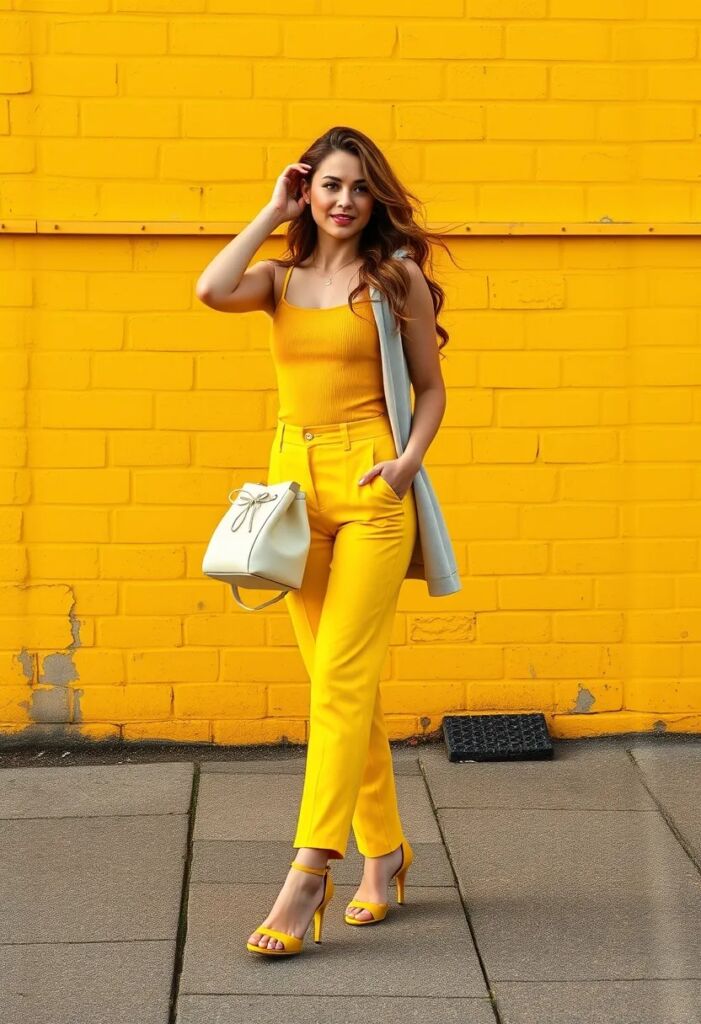
Pro Tip: Start with a pastel yellow or a soft yellow shade if you’re new to incorporating this colour into your wardrobe. As you become more comfortable, you can experiment with bolder and brighter shades.
Green: The Colour of Nature and Harmony
Green is a soothing and refreshing colour that is often associated with nature, growth, and harmony. In fashion, green can be used to create a balanced and calming effect. It is particularly effective in settings where you want to appear grounded and reliable.
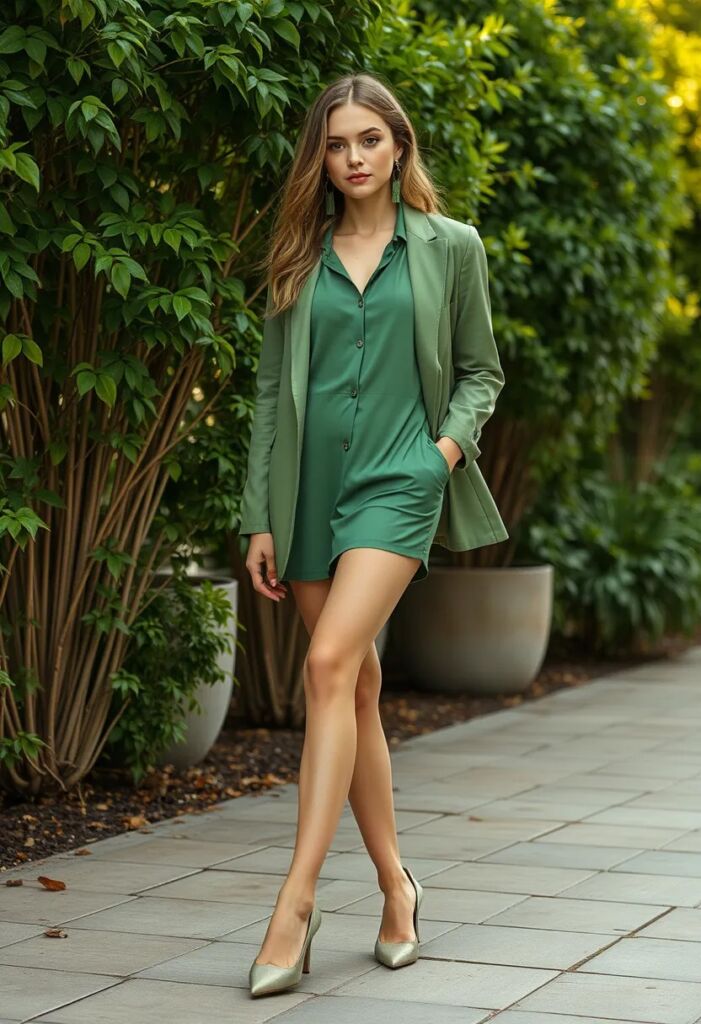
Pro Tip: Incorporate green into your wardrobe with pieces like a green blouse, dress, or jacket. Pair with neutral colours or other earth tones for a harmonious and natural look.
Purple: The Colour of Luxury and Creativity
Purple is a regal and sophisticated colour that is often associated with luxury, creativity, and mystery. In fashion, purple can be used to create a unique and elegant look. It is particularly effective in settings where you want to stand out and make a memorable impression.
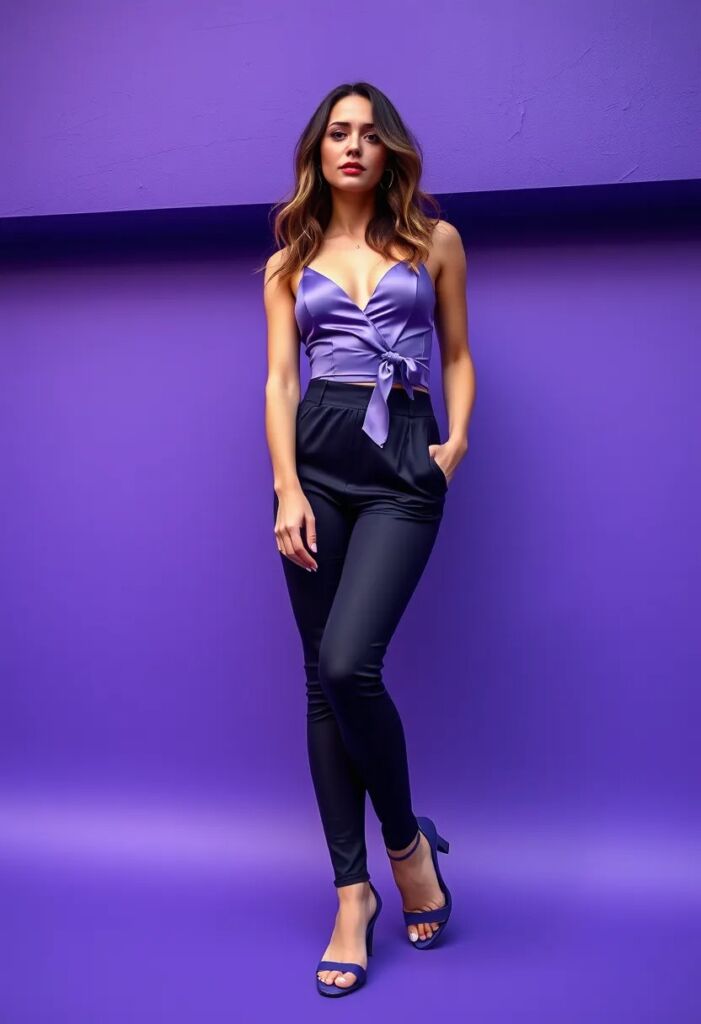
Pro Tip: Choose a deep purple or lavender shade for a sophisticated and elegant look. Pair with neutral colours or metallics for a touch of luxury.
Black: The Colour of Sophistication and Power
Black is a timeless and versatile colour that is often associated with sophistication, power, and authority. In fashion, black can be used to create a sleek and professional look. It is particularly effective in professional and formal settings where you want to appear confident and in control.
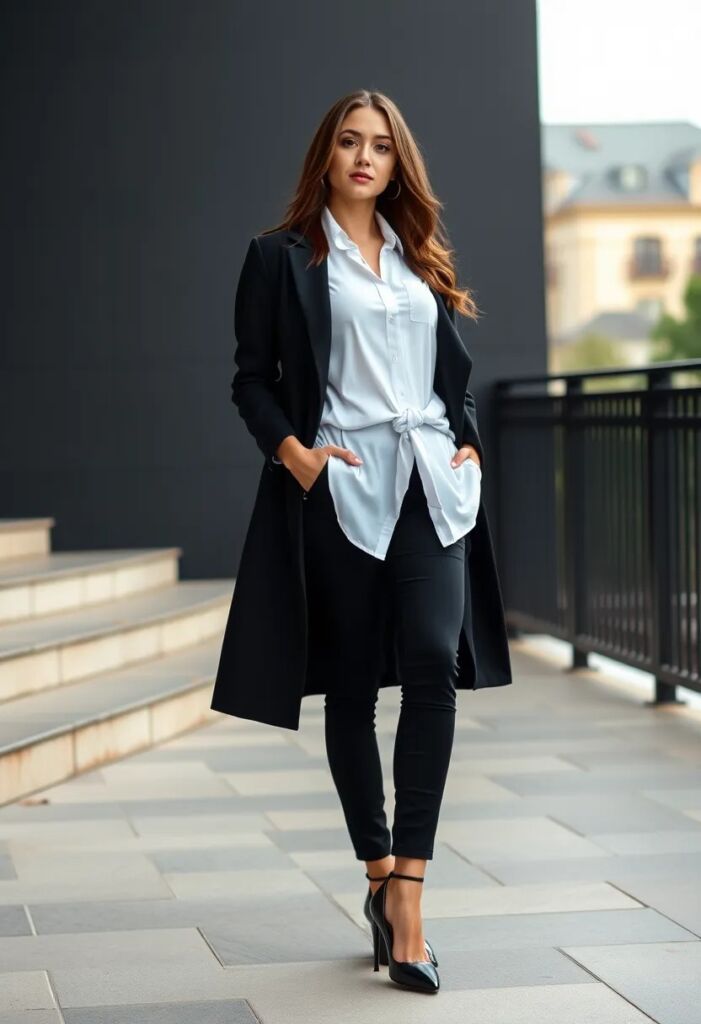
Pro Tip: Use black as a base for your outfit and add pops of colour with accessories or statement pieces to create a balanced and stylish look.
White: The Colour of Purity and Simplicity
White is a clean and simple colour that is often associated with purity, simplicity, and clarity. In fashion, white can be used to create a fresh and modern look. It is particularly effective in settings where you want to appear approachable and open.
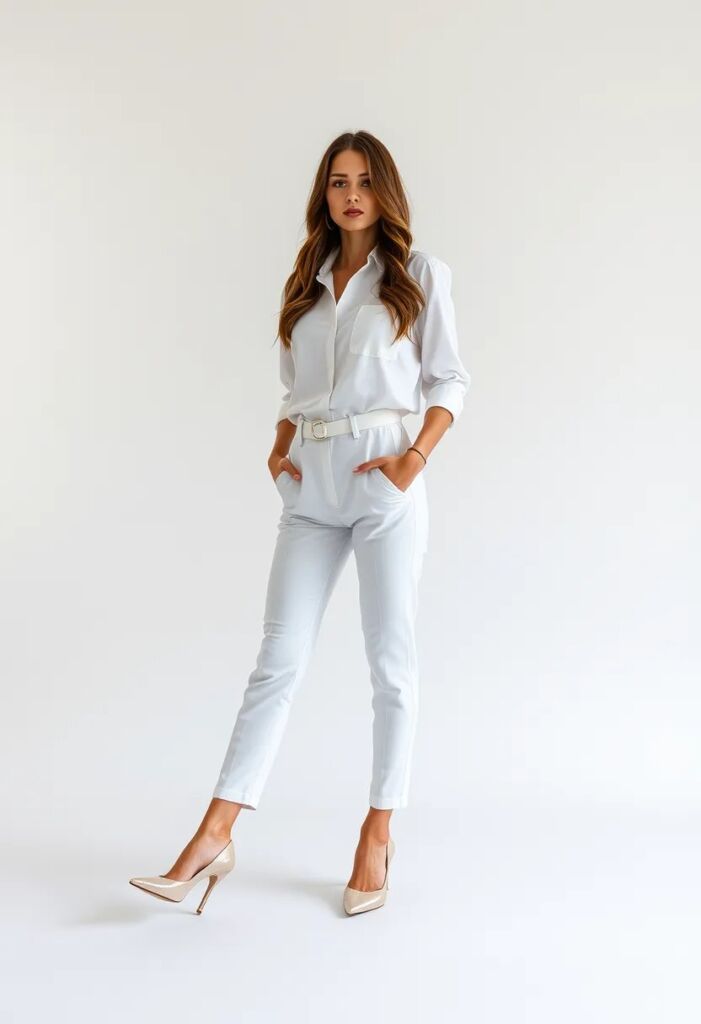
Pro Tip: Opt for a crisp white shirt or blouse as a foundation for your outfit. Pair with neutral colours or pastel shades for a clean and sophisticated look.
The Science Behind Colour Psychology in Fashion
Colours play a significant role in nonverbal communication, which is the process of conveying information through body language, facial expressions, and other nonverbal cues. In fashion, the colours you choose can communicate a lot about your personality, mood, and intentions. For example, wearing red can signal confidence and passion, while wearing blue can signal trust and reliability.
The Impact of Colour on Perception
The colours you wear can influence how others perceive you. According to a study by Elliot and Maier (2012), the colour red can enhance perceptions of attractiveness and dominance. Similarly, a study by Johnson, Lennon, and Rudd (2014) found that the colours you wear can affect how you are perceived in professional settings, with darker and more neutral colours often being associated with competence and authority.
The Psychological Effects of Colour on the Wearer
The colours you wear can also have a significant impact on your own emotions and behaviors. For example, wearing yellow can boost your mood and increase your energy levels, while wearing blue can help you feel calm and focused. Understanding these effects can help you choose colours that align with your goals and enhance your overall well-being.
Practical Tips for Using Colour Psychology in Fashion
Dressing for Different Occasions
Professional Settings
In professional settings, it’s important to choose colours that convey competence, reliability, and authority. Opt for neutral and dark colours like navy blue, black, and grey. These colours are often associated with professionalism and can help you make a strong and positive impression.
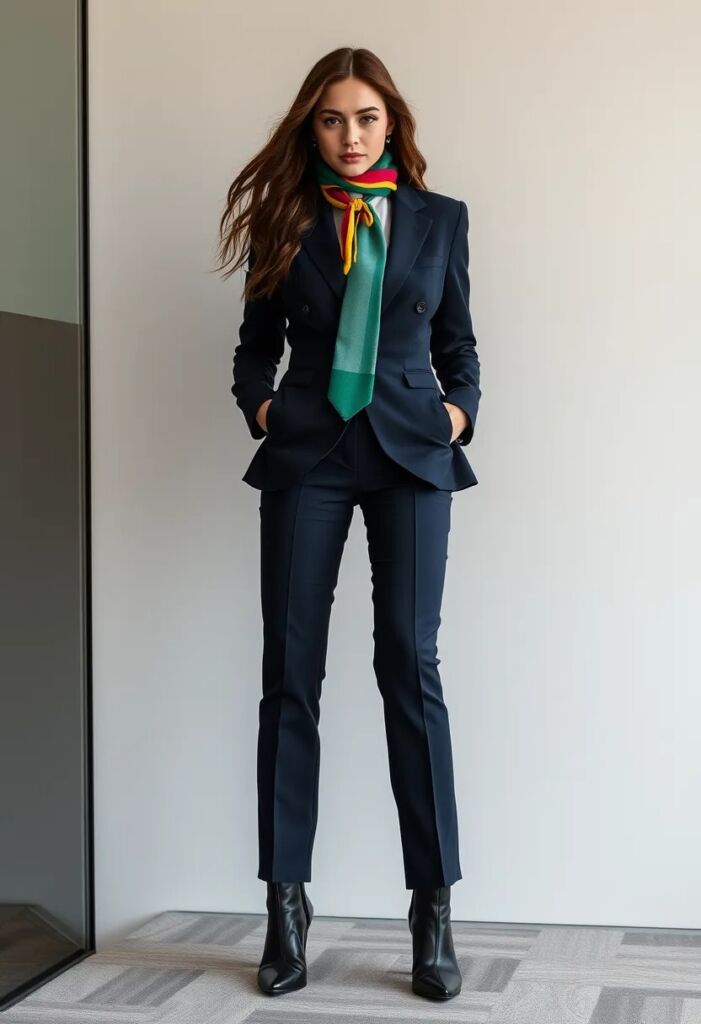
Pro Tip: Add a touch of color with a statement accessory, such as a colorful scarf or tie, to add interest to your outfit without overwhelming it.
Social Settings
In social settings, you have more freedom to experiment with different colours and styles. Bright and bold colours like red, yellow, and purple can help you stand out and make a memorable impression. These colours are often associated with energy, creativity, and fun.
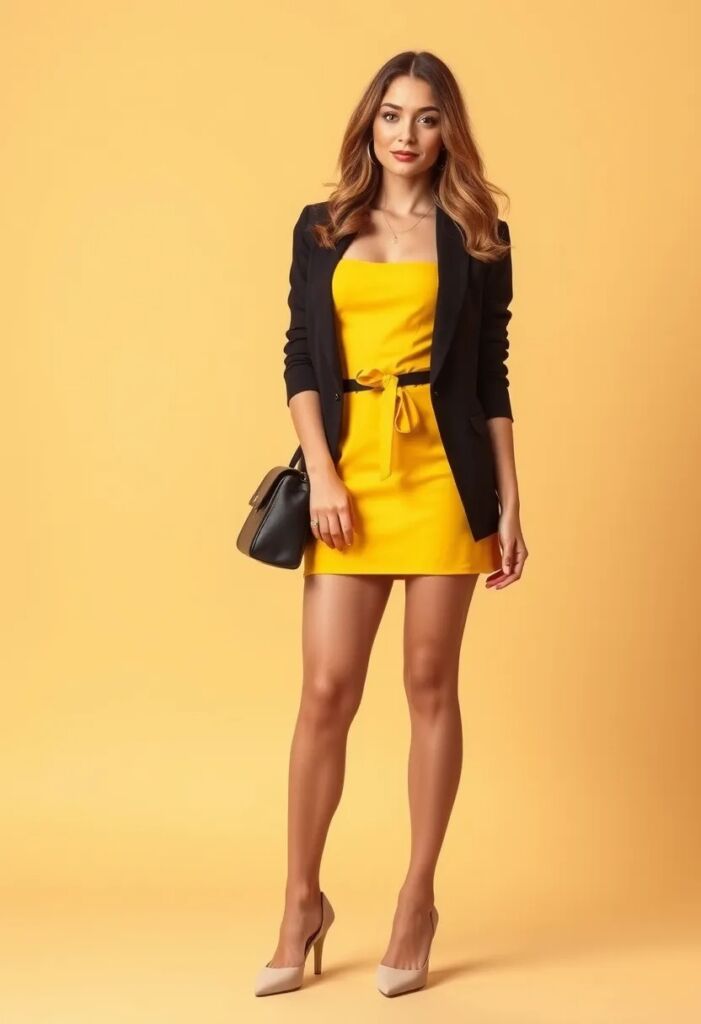
Pro Tip: Balance bold colours with more neutral pieces to create a harmonious and balanced look. For example, pair a bright yellow dress with a black blazer and neutral shoes.
Casual Settings
In casual settings, you can be more relaxed and playful with your colour choices. Pastel shades and earth tones are often a good choice, as they create a relaxed and comfortable vibe. These colours are often associated with simplicity and naturalness.

Pro Tip: Mix and match different shades and tones to create a fun and eclectic look. For example, pair a pastel pink top with a light blue skirt and white sneakers.
Using Colour to Enhance Your Mood
Boosting Your Confidence
If you want to boost your confidence, choose colours that make you feel powerful and in control. Red and black are excellent choices, as they are often associated with confidence and authority. Wearing these colours can help you feel more self-assured and capable.
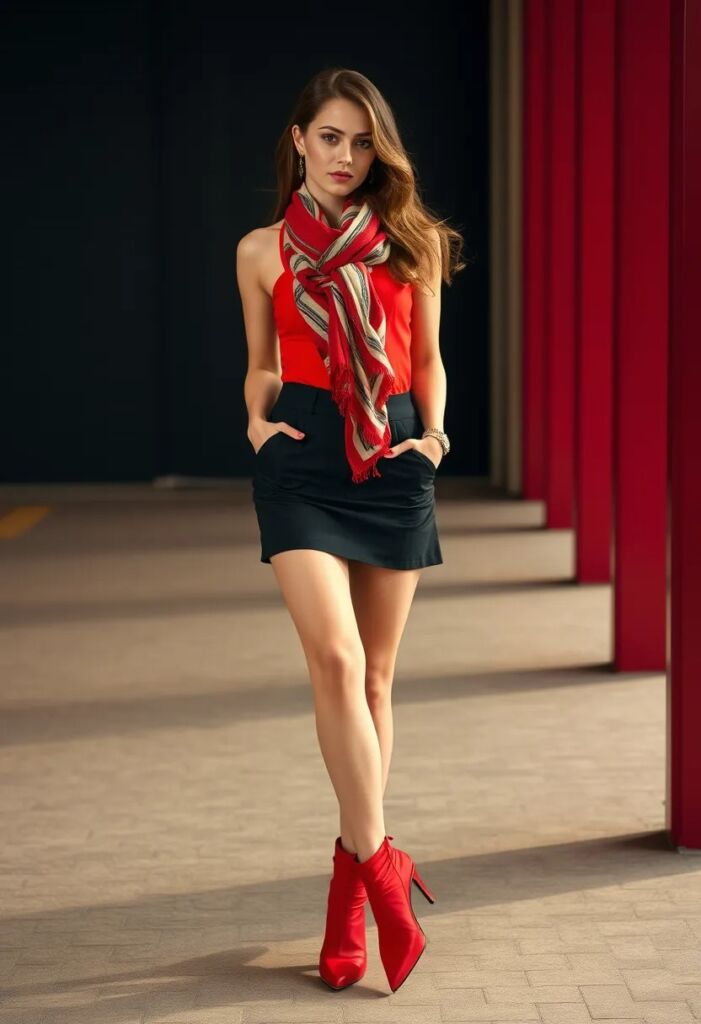
Pro Tip: Start with a small piece of red or black, such as a scarf or shoes, if you’re new to these colours. As you become more comfortable, you can incorporate them more fully into your wardrobe.
Lifting Your Mood
If you want to lift your mood, choose colours that are bright and cheerful. Yellow, orange, and pink are excellent choices, as they are often associated with happiness and energy. Wearing these colours can help you feel more positive and upbeat.
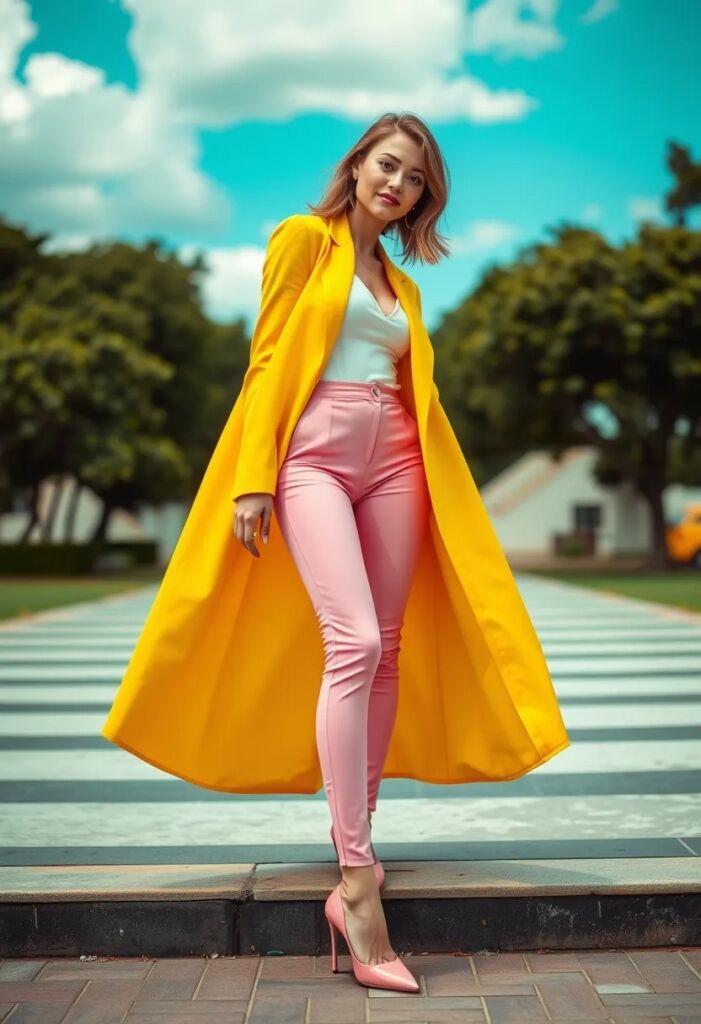
Pro Tip: Incorporate these colours into your wardrobe with accessories or statement pieces. For example, add a yellow handbag or a pink pair of shoes to your outfit.
Calming Your Mind
If you want to calm your mind and reduce stress, choose colours that are soothing and relaxing. Blue, green, and pastel shades are excellent choices, as they are often associated with calmness and tranquillity. Wearing these colours can help you feel more relaxed and at ease.

Pro Tip: Opt for a soft blue or green top or dress as a foundation for your outfit. Pair with neutral colours or other pastel shades for a calming and harmonious look.
The Impact of Colour on Different Body Types
The colours you choose can also impact how your skin tone appears. It’s important to choose colours that complement your skin tone to create a harmonious and balanced look. Here are some general guidelines:
- Fair Skin: Opt for soft and pastel shades, as well as deep, rich tones like burgundy and navy blue.
- Olive Skin: Choose warm and earthy tones, as well as bright and bold colours like red and orange.
- Dark Skin: Opt for bright and bold colours, as well as deep, rich tones like emerald green and royal blue.
Enhancing Your Figure with Colour
Colours can also be used to enhance your figure and create the illusion of different shapes. Here are some tips:
- Slimming Effect: Darker colours, such as black, navy blue, and dark grey, can create a slimming effect. Wear these colours to create a more streamlined silhouette.
- Expanding Effect: Lighter colours, such as white, pastel shades, and bright colours, can create an expanding effect. Use these colours to draw attention to areas you want to highlight.
Using Colour to Create Balance
If you have a naturally curvy figure, you can use colour to create balance and proportion. For example, if you have a larger bust, you can wear a darker colour on top and a lighter colour on the bottom to create a more balanced look. Conversely, if you have a larger bottom, you can wear a lighter colour on top and a darker colour on the bottom.
The Future of Colour Psychology in Fashion
As the field of colour psychology continues to evolve, new trends and insights are emerging. For example, the use of colour in virtual and augmented reality is opening up new possibilities for how colours can be used to influence emotions and behaviors. Additionally, the rise of personalized fashion is leading to a greater emphasis on individual preferences and the unique psychological effects of different colours.
The Role of Technology in Colour Psychology
Technology is playing an increasingly important role in the field of colour psychology. For example, apps and online tools can help you choose the right colours for your skin tone and figure. Additionally, virtual try-on technology is making it easier to experiment with different colours and styles without the need for physical try-on.
The Impact of Sustainability on Colour Choices
Sustainability is also becoming an important consideration in the fashion industry. As consumers become more conscious of the environmental impact of their choices, there is a growing trend towards using natural and eco-friendly dyes. These dyes often produce unique and nuanced colours that can add depth and character to your wardrobe.
Conclusion
Colour psychology is a powerful tool that can help you make more informed and intentional choices in your wardrobe. By understanding the psychological effects of different colours, you can choose outfits that align with your goals and enhance your overall presence. Whether you’re dressing for a job interview, a first date, or a casual outing, the colours you choose can significantly impact how you feel and how others perceive you.
References:
- Elliot A. J., Maier M. A. (2012). Chapter Two—Color-in-context theory. In Devine P., Plant A. (Eds.), Advances in experimental social psychology (Vol. 45, pp. 61–125). Academic Press. 10.1016/B978-0-12-394286-9.00002-0
- Elliot A. J., Maier M. A. (2014). Color psychology: Effects of perceiving color on psychological functioning in humans. Annual Review of Psychology, 65(1), 95–120. 10.1146/annurev-psych-010213-115035
- Johnson K., Lennon S. J., Rudd N. (2014). Dress, body and self: Research in the social psychology of dress. Fashion and Textiles, 1(1), Article 20. 10.1186/s40691-014-0020-8
